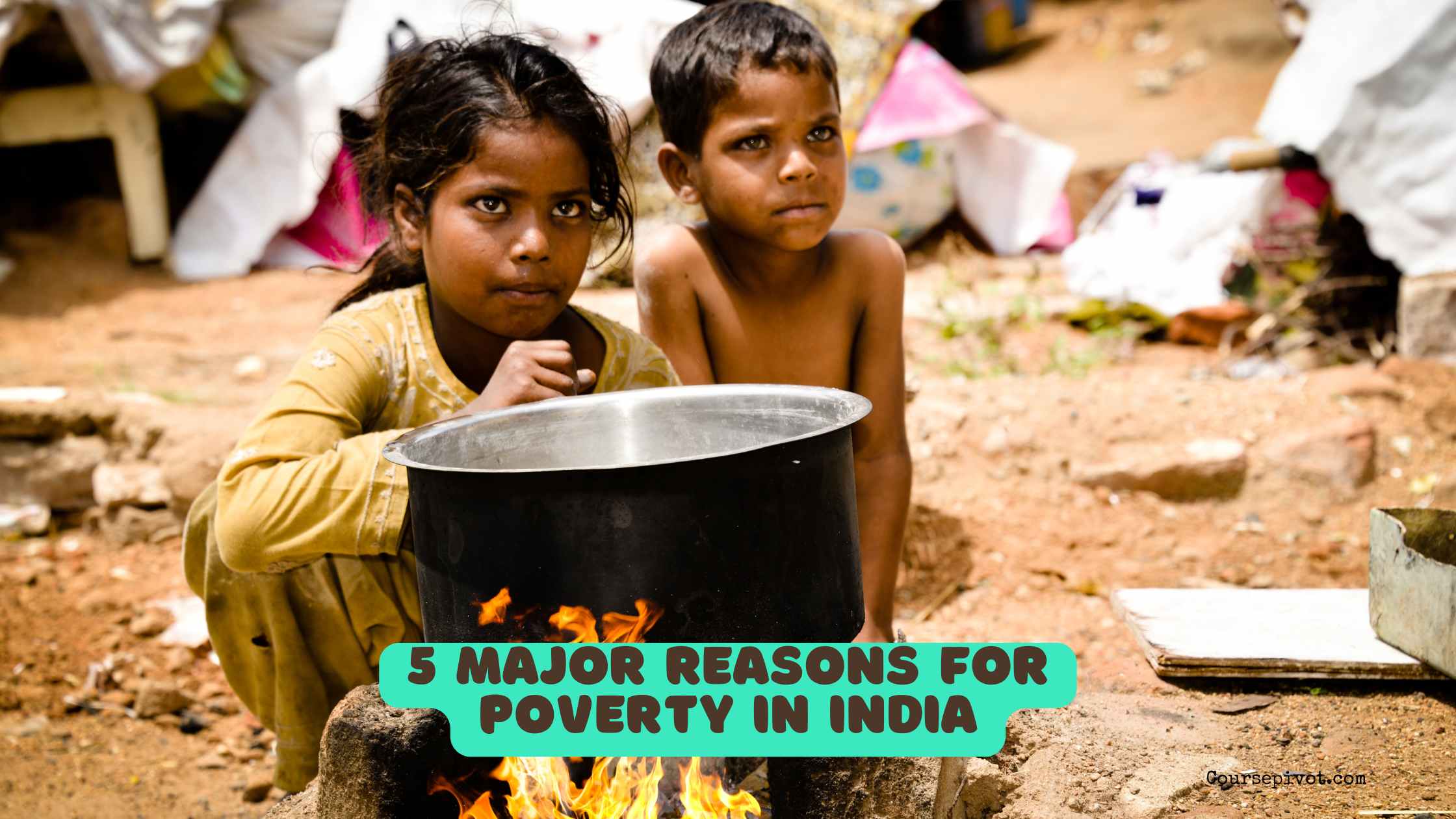
5 Major Reasons for Poverty in India
India’s story is one of triumph and tenacity—lifting 415 million people out of multidimensional poverty between 2005 and 2021, per NITI Aayog’s 2023 report, with extreme poverty dropping to just 2.3% by 2022-23 according to the World Bank’s April 2025 update. Yet, despite this progress, over 100 million Indians still live below the poverty line, grappling with inequality amid rapid urbanization and economic shifts. Poverty here isn’t just about income; it’s a web of social, structural, and systemic hurdles that demand nuanced solutions.
Table of Contents
This exploration uncovers five major reasons for poverty in India, drawn from 2025 analyses by sources like the World Bank, NITI Aayog, and Forbes India. From overpopulation to social divides, these factors persist despite growth rates hovering at 7% GDP annually. Understanding them isn’t defeatist—it’s the first step toward empowerment. If you’re pondering India’s path forward, read on for insights and actionable paths.
Overpopulation: Straining Resources and Opportunities
India’s population, exceeding 1.4 billion in 2025 per UN estimates, overwhelms infrastructure and jobs. Overpopulation exacerbates poverty by diluting resources—per capita income lags at $2,500 annually, per World Bank data, as demand outstrips supply in housing, education, and healthcare.
A 2025 Forbes India report highlighted rural Bihar, where 40% live below $2/day due to crowded farmlands yielding less per person. Families split thin earnings across more mouths, trapping generations in cycles.
Government schemes like PM Awas Yojana house 4 crore families by 2025, but scaling family planning via awareness campaigns could ease the strain.
Unemployment and Underemployment: Jobs That Don’t Pay Enough
With a youth bulge—65% under 35—India’s job market buckles. High unemployment, at 8.1% in urban areas per 2025 CMIE data, and rampant underemployment (workers in low-skill gigs) keep wages stagnant, affecting 200 million informal laborers.
A NITI Aayog 2025 study noted gig economy roles like delivery riders earning ₹15,000/month—barely covering basics in Mumbai’s ₹20,000 rent average. Skill mismatches leave graduates flipping burgers.
Skill India’s 2025 push trains 40 crore youth; vocational programs could bridge gaps, turning jobless youth into earners.
Agricultural Challenges: When the Land Fails to Feed
Farming, employing 45% of India’s workforce, yields poverty for many. Low agricultural productivity—due to fragmented lands, climate woes, and outdated tech—keeps rural incomes at ₹10,000/month, per 2024 NSSO stats, with 60% of farmers in debt.
A 2025 World Bank report cited erratic monsoons slashing Punjab’s wheat output by 15%, forcing migrations. Monocropping depletes soil, trapping smallholders.
PM-KISAN’s ₹6,000/year aid reaches 11 crore farmers; sustainable practices like drip irrigation could boost yields 30%.
Social Inequalities: Caste and Gender Divides Deepening Poverty
Historical inequities linger, with Scheduled Castes and Tribes facing 25% higher poverty rates, per 2025 Oxfam India data. Social inequalities, including caste discrimination and gender gaps, limit access—women’s labor participation at 37% earns 20% less than men.
A 2024 Jagran Josh analysis showed Dalit households in Uttar Pradesh earning 40% below average due to job biases. Gender norms keep 50 million girls out of school.
Reservation quotas in jobs (27% for OBCs) and Beti Bachao campaigns empower; anti-discrimination laws need stricter enforcement.
Limited Access to Education and Healthcare: Breaking the Cycle’s Foundation
Without basics, upward mobility stalls. Inadequate education and healthcare affect 20% of rural kids dropping out by Class 8, per 2025 ASER report, while out-of-pocket health costs bankrupt 55 million yearly, per WHO.
Read 3 Reasons Why the Sepoys Were Unable to Free India from the British
A 2025 Outreach International blog detailed a Rajasthan village where malaria halved school attendance, perpetuating illiteracy-fueled low-wage traps.
Ayushman Bharat covers 50 crore for health; mid-day meals boost enrollment 15%. Universal access investments could lift 100 million by 2030.
| Reason for Poverty | Key Impact | Government Initiative |
|---|---|---|
| Overpopulation | Resource dilution | Family planning campaigns |
| Unemployment | Stagnant wages | Skill India training |
| Agricultural Challenges | Farmer debt | PM-KISAN subsidies |
| Social Inequalities | Marginalized exclusion | Reservation quotas |
| Limited Access | Cycle perpetuation | Ayushman Bharat health cover |
This table, inspired by NITI Aayog, links causes to responses.
Practical Steps to Combat Poverty in India
Empowered to act? First, support local: Donate to NGOs like Akshaya Patra (mid-day meals) or Pratham (education)—₹500 feeds a child monthly.
Second, advocate: Join petitions on Change.org for better wages; 1 million signatures pushed MGNREGA hikes in 2024.
Third, upskill: Free platforms like SWAYAM offer 10,000 courses; 5 crore enrolled in 2025, per Ministry of Education.
Finally, vote and engage: Back pro-poor parties in 2029 elections; community forums amplify rural voices. Small ripples build waves—your involvement counts.
Key Takeaways
Delving into five major reasons for poverty in India—overpopulation, unemployment, agricultural woes, social divides, and access gaps—reveals a nation at a crossroads, with extreme poverty at 2.3% yet 100 million still struggling, per 2025 World Bank data. These intertwined factors, from Bihar’s crowded fields to gender wage gaps, demand holistic fixes beyond GDP growth.
This matters because poverty isn’t fate—it’s fixable. Initiatives like Skill India and Ayushman Bharat show promise, lifting millions yearly. Individuals, engage locally; policymakers, prioritize equity. India’s rise hinges on inclusive progress—one step, one voice at a time.
Cite this article
You can copy and paste your preferred citation format below.
Martin, L. & Arquette, E.. (2025, October 24). 5 Major Reasons for Poverty in India. Coursepivot.com. https://coursepivot.com/blog/5-major-reasons-for-poverty-in-india/



